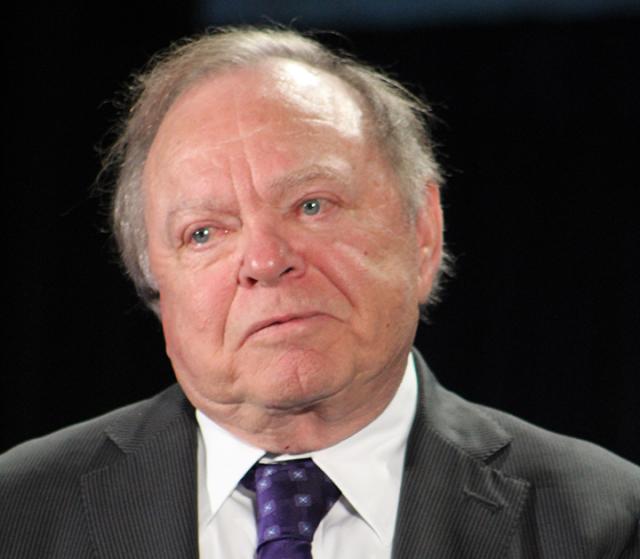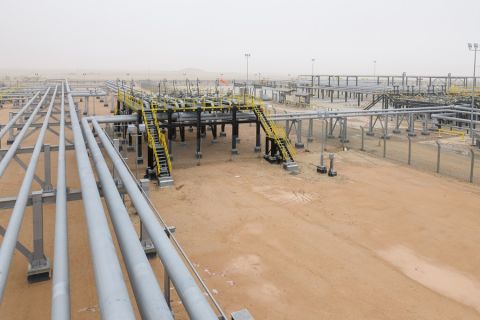
(Source: Mary Holcomb, Hart Energy)
OKLAHOMA CITY—North America’s shale-driven “energy renaissance” has been the biggest change in the oil business since Saudi Arabia discovered vast crude reserves in the 1950s, and it’s crucial that the trend continue if the U.S. is to maintain a strong, prosperous economy.
That was one of multiple points legendary Oklahoma oilman Harold Hamm made in his opening keynote interview with Oil and Gas Investor’s Nissa Darbonne at Hart Energy’s DUG Midcontinent conference and exhibition Nov. 20. The founder, CEO and chairman of Continental Resources Inc. touched on the success of his firm, the industry and the challenges both face.
“We can’t have 4% GDP growth without oil and gas,” Hamm said, emphasizing the importance of a strong domestic energy supply to support all aspects of a growing economy.
Closer to home, Oklahoma’s prospects as an energy producer “are bright,” Hamm told conference attendees. “We’ve more than tripled oil production, and gas production has more than doubled. We’re up to about 600,000 barrels per day of oil and 8.5 billion cubic feet per day of natural gas. We have a good regulatory environment here in the state. We do need for commodity prices to recover—we’d all be a lot happier if that happened.”
The Sooner State has had midstream infrastructure issues that have created price differentials “but we’re not as constrained as some basins, certainly not like the Permian. The good thing about Oklahoma is we had existing infrastructure, which has been here a long time. That boded well for development” as the Midcontinent’s unconventional plays developed in the past decade.
Growing up in the Enid, Okla., area, Hamm has been in the oil and gas business most of his life. He founded Continental in Enid in 1967. It went public in 2007 and later moved its headquarters to Oklahoma City. The company has grown into a major oil producer in the Midcontinent and Williston Basin. Hamm also has worked as a major industry spokesman on such issues as exports and deregulation.
Continental pioneered developing Oklahoma’s SCOOP play and the Bakken play in North Dakota and Montana.
Asked if Continental was just lucky, or if skill helped it find oil, Hamm replied there was luck, yes, “but we have a great team. We’ve honored science, we have great geologists and some fabulous engineers that have been with the company an awfully long time.” He noted the firm has emphasized finding and producing oil “because of intrinsic value. Gas is ubiquitous, it’s everywhere, and with the shales you find a lot of both.”
Hamm added the Bakken “made America a major shale player” as it developed into a significant oil producing province, adding to the established, conventional Permian Basin and Midcontinent regions. That crude production surge enabled retailers, for example, to lower diesel prices from around $4.50 per gallon a dozen years ago—when the conventional wisdom said the U.S. would remain an importer of heavy oil with few middle distillates—to somewhere around $2.25/ per gallon now, thanks to the wide distillate cut typical in Bakken crude.
‘A Game Changer’
The Bakken “was a game changer in so many ways,” he added. “It is the one that really started the energy renaissance in this country, in my opinion.”
The shale boom brought a lot of new investors into oil and gas, particularly private equity providers, Hamm noted. That infusion of money led to the current oil and gas oversupply—and now many of those private equity investors seek to leave as commodity prices remain weak. He pointed out there are 31 publicly held oil and gas firms with market caps of $1 billion or more “and a lot people don’t realize it but there are 500 private equity companies.”
The downturn will balance out the number of operators and capital providers, Hamm said.
Given the current market situation, the build-and-flip model advocated by private equity-backed firms no longer works, he said, “although the early players were very successful.
“Recovery is a matter of balancing supply with the market, and that’s what we have to do,” Hamm said. The declining rig count provides one indication of the business working to bring supply and demand back into balance. “I don’t think anyone expected the sector to come together with the discipline that has been shown.”
The conventional wisdom holds the rig count has to drop below 800 “and here we are at 784 [at Nov. 15]. It may go down to 750,” he added. “That’s what has to be done.” The industry-standard Baker Hughes rig count fell again Nov. 22 to 781.
Hamm emphasized the importance of energy exports and a well-placed midstream to support it. “The more infrastructure we build, the better it is.”
ESG Opportunity
The current emphasis on ESG—environmental, safety and governance—issues “is a wonderful opportunity” for the oil and gas industry to tell an excellent story to a sometimes doubtful public, as it also works to clear over-regulation problems.
Hamm mentioned federal law that requires gas pipelines to receive Federal Energy Regulatory Commission approval, while oil pipelines simply need sufficient customer commitments to move forward. Having President Donald Trump in the White House has been a plus for oil and gas, Hamm emphasized, mentioning his work with the Domestic Energy Producers Alliance, a trade group representing some 33 associations and firms in Washington, D.C.
“He has the right attitude, ‘how can I help?’ but couldn’t even get in to see President Obama,” Hamm said of Trump.
Recommended Reading
Shipping Industry Urges UN to Protect Vessels After Iran Seizure
2024-04-19 - Merchant ships and seafarers are increasingly in peril at sea as attacks escalate in the Middle East.
Paisie: Crude Prices Rising Faster Than Expected
2024-04-19 - Supply cuts by OPEC+, tensions in Ukraine and Gaza drive the increases.
Report: Freeport LNG Hits Sixth Day of Dwindling Gas Consumption
2024-04-17 - With Freeport LNG operating at a fraction of its full capacity, natural gas futures have fallen following a short rally the week before.
Permian NatGas Hits 15-month Low as Negative Prices Linger
2024-04-16 - Prices at the Waha Hub in West Texas closed at negative $2.99/MMBtu on April 15, its lowest since December 2022.
Oil Prices Edge Lower on False Report of Israeli Ceasefire, Sustained OPEC Cuts
2024-02-01 - Oil prices fell 2% on the false speculation that Israel and Hamas had tenatively agreed to a ceasefire, but losses were subsequently pared.


